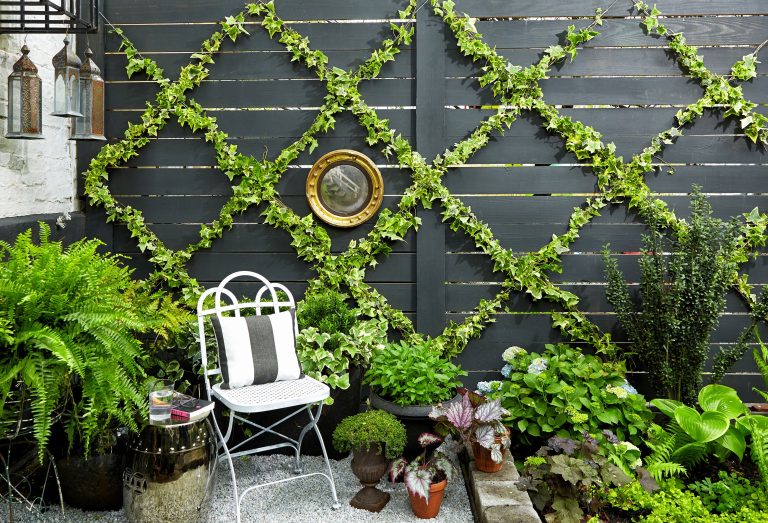Every gardener knows how hard it is to garden in a small space. But there are ways you can maximize small spaces and turn them into the beautiful garden of your dreams.This is where the real fun starts; exploiting small spaces can yield even more impressive results than your standard-sized garden. But don’t get bogged down in the details and fret over all things that go wrong; here are 5 ways you can maximize small garden spaces and start enjoying it now!
Vertical Planting
If you live in an apartment, or even just a small house with limited space for a garden, vertical planting is a great way to make the most out of your space. Vertical planting is when you grow plants on walls or fences. It’s also called wall-of-branches gardening.
This type of garden can be used to create privacy and shade, as well as add interest to your yard. You can also use vertical gardens as a way of growing vegetables or herbs in places where it would otherwise be impossible to grow them (such as on balconies).
Here are some tips for getting started
- Choose a container that is at least one foot deep and has drainage holes in the bottom. To prevent water from pooling at the bottom of your pot, fill it with gravel or rocks first before adding soil.
- Add a layer of organic material such as newspaper strips or paper towels between layers of soil so that water drains through easily without clogging up your drainage holes.
- Position plants so that they’re not blocking light from reaching other plants below them—this will help them grow faster!
Climbing Plants
If you have a small garden space, it can be challenging to make the most of it. But with the right plants and some creative thinking, you can create an oasis in your yard that’s just as beautiful as a larger one.
One way to maximize your small garden space is by using climbing plants. These plants are great for this because they can grow up a trellis or other support structure, giving them more vertical space than if they were planted in the ground. Climbing plants also tend to be less expensive than trees, which can be a huge help when you’re working with a smaller budget.
Some popular climbing plants include: Clematis, Jasmine, Ivy, Hydrangea, Lonicera nitida (a plant native to Asia whose fragrant blooms tend to attract hummingbirds)
Repurposing Walls
An easy way to maximize small garden spaces is by repurposing walls. You can use a wall as a divider, creating two separate areas in your garden. This can be done by adding a trellis or trellis-style gate at the top of the wall that separates the two areas. The wall also gives you privacy when you need it, as well as a nice backdrop for planting flowers or vegetables in pots. It’s also great for creating an outdoor dining area.
Small Pots for Mini Gardens
If you have a small space, but still want to grow fresh fruits and vegetables, the best way to do so is by using small pots and garden beds.
Small pots are lightweight and easy to move around, which means that you can easily rotate them in your garden bed. You can also just move them around when you want to water them or give them fertilizer.
The soil in a small pot will dry out faster than in a large one, so make sure that you water your plants more often than you normally would. Also, consider using an organic mulch such as straw or pine needles on top of the soil to help keep it moist longer.
Using smaller pots or garden beds also allows for more control over how much water goes into each plant. This is especially important if you’re growing something like tomatoes or peppers that need lots of water but don’t like too much at once; these plants tend not to recover well from drowning!
You can find small pots and small raised garden beds from a variety of stores online, Frame It All have a great selection for all levels of gardeners.
Creating Levels
The key to maximizing small garden spaces is to create levels. This can be done by adding a raised bed, which is essentially just a raised area of soil that you can plant in and use as a garden. Raised beds are perfect for small gardens because they allow the gardener to have more control over the drainage of water, which is especially important for areas where there is a lot of rain.
An alternative to building a raised bed is to just build up the ground in general by adding mulch or soil around the plants so that they are elevated above the ground. This will help with drainage as well, but it may not be as easy as building a raised bed.
Takeaway
We know that with the right techniques, it’s possible to maximize a small garden space. You can use your imagination, plan out the perfect outdoor space, and make the most of what you have. With a little bit of work, you’ll be able to create a beautifully landscaped garden that takes advantage of every inch of your outdoor space. Put in some time and dedication, and you’ll be rewarded with an eye-catching, unique garden in no time at all.

